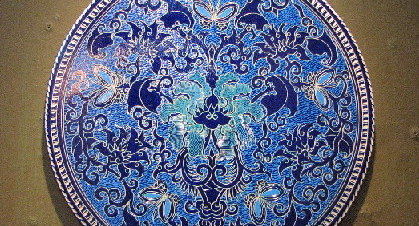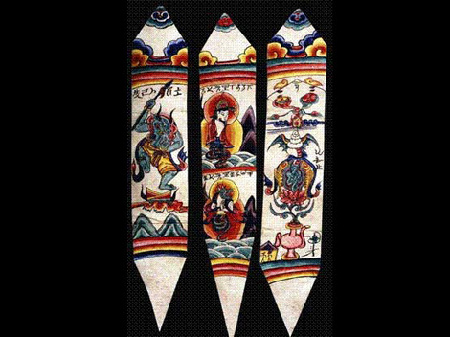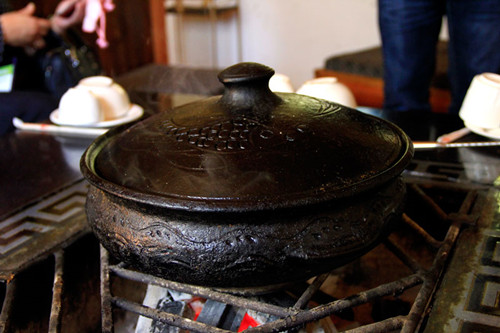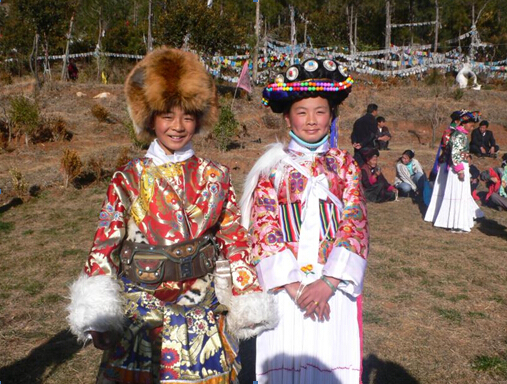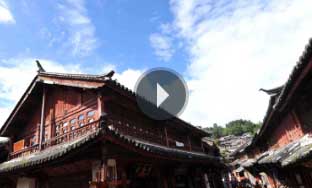Naxi Ethnic Minority
(Chinaculture.org)
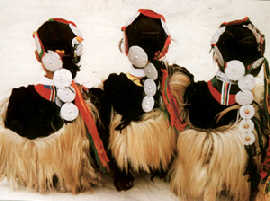 With a population of about 278,009 (as of 1990), the Naxi ethnic group mainly live in concentrated communities in the Naxi Autonomous County of Lijiang in the Yunnan Province, and the rest are scattered throughout the neighboring counties in Yunnan Province, as well as Yanyuan, Yanbian and Muli counties in Sichuan Province. There is also a small number living in the Mangkang County in the Tibet Autonomous Region.
With a population of about 278,009 (as of 1990), the Naxi ethnic group mainly live in concentrated communities in the Naxi Autonomous County of Lijiang in the Yunnan Province, and the rest are scattered throughout the neighboring counties in Yunnan Province, as well as Yanyuan, Yanbian and Muli counties in Sichuan Province. There is also a small number living in the Mangkang County in the Tibet Autonomous Region.
The Naxi ethnic minority has its own language which belongs to the Yi branch of Tibeto-Burman Austronesian of the Chinese-Tibetan Phylum. The ancient Naxi people created pictographic characters called the "Dongba" script and a syllabic writing known as the "Geba" script. However, they were difficult to master, and in 1957 the government helped the Naxi design an alphabetic script. Due to close contact with the Han people over the past several hundred years, the Naxi people also use the oral and written Chinese to communicate.
According to historical documents, the forefathers of the Naxi people were closely related to a tribe called "Maoniu Yi" in the Han Dynasty (206BC-220AD), "Mosha Yi" in the Jin Dynasty (265-420) and "Moxie Yi" in the Tang Dynasty (618-907). The Naxis also had a number of other names. In 1278, the Yuan Dynasty established Lijiang Prefecture representing the imperial court in Yunnan Province. After the founding of the PRC in 1949, following consultation with the ethnic minority, it agreed upon the official name of Naxi ethnic minority.
Agriculture is the main occupation of the Naxi people, together with stockbreeding and handicraft industry. The banks of the Jinsha River are heavily forested, and Yulong Mountain is known at home and abroad as a "flora storehouse". The extensive dense forests contain Chinese fir, Korean pine, Yunnan pine and other valuable trees, as well as many varieties of herbs.
Naxi literature is rich in form and content. The Dongba script created in the seventh century by the Naxi people is the only pictographic characters extant in the world. TheDongba Scripture, a religious work written in the pictographic script, describes the various aspects of life of the Naxi people during their long transition from slavery to feudalism. It is extremely important for the study of Naxi literature, history and religion.
Most Naxi people were followers of the Dongba religion, which is a form of Shamanism. Lamaism, Buddhism, Taoism and Christianity only have limited access to the Lijiang area.
The traditional festivals include the Farm-Tool Fair in January, the God of the Rain Festival in March, and the Mule and Horse Fair in July. There are also the Spring Festival, the Qingming Festival, the Dragon Boat Festival, the Mid-autumn Festival and the Torch Festival -- all being the same as those of the Hans.

